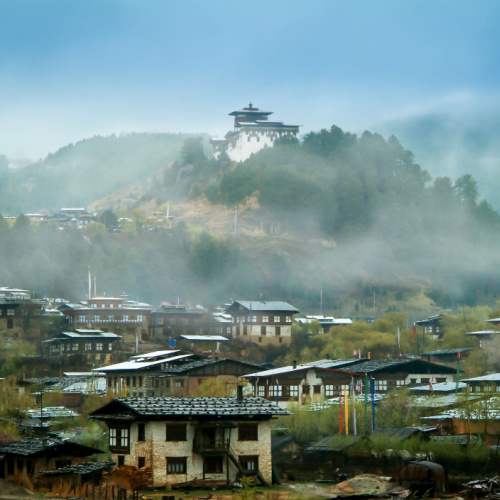
Ron Ramtang/Shutterstock
When Is the Best Time to Visit Bhutan?
The best time to visit Bhutan is during the spring, from March to May, or the autumn, from September to November. During these months, the weather is generally mild and sunny, with little rain.
This makes it ideal for enjoying the country’s stunning mountain scenery, ancient temples, and unique culture.
Benefits of visiting Bhutan during the spring or autumn:
- Mild weather: Bhutan has a diverse climate, with varying temperatures and rainfall depending on the altitude. However, the spring and autumn are the most pleasant times of year to visit, with mild temperatures and sunny skies.
- Clear skies: The spring and autumn are also the driest times of year in Bhutan, with clear skies and excellent views of the Himalayas.
- Fewer crowds: Bhutan is a popular tourist destination, but the spring and autumn are less crowded than the summer months. This means you’ll have more space to explore the country’s attractions and enjoy a more authentic experience.
Specific examples of how you can enjoy Bhutan during the spring or autumn:
- March to May: This is a great time to go trekking in the Himalayas, visit the Paro Taktsang monastery (also known as Tiger’s Nest), and attend the Punakha Tsechu festival.
- September to November: This is a good time to visit the Phobjikha Valley to see the black-necked cranes, visit the Dochula Pass for stunning views of the Himalayas, and attend the Thimphu Tsechu festival.
While a visit to Bhutan during the spring or autumn is more likely to be pleasant and enjoyable, the country can be visited year-round. The summer months (June to August) can be hot and humid, especially at lower altitudes. However, this is also a good time to visit if you’re interested in trekking in the high Himalayas.
The winter months (December to February) can be cold, especially in the mountains. However, this is also a good time to visit if you’re interested in seeing the snow-capped Himalayas and experiencing Bhutanese culture during the winter festivals.
 Average Temperatures by Month
Average Temperatures by Month
|
Jan |
Feb |
Mar |
Apr |
May |
Jun |
Jul |
Aug |
Sep |
Oct |
Nov |
Dec |
| Fahrenheit |
39°
|
41°
|
46°
|
55°
|
60°
|
65°
|
66°
|
66°
|
64°
|
59°
|
51°
|
43°
|
| Celsius |
4°
|
5°
|
8°
|
13°
|
16°
|
18°
|
19°
|
19°
|
18°
|
15°
|
11°
|
6°
|
Climate in Bhutan
Summer Season in Bhutan
Bhutanese summers are warm with clear skies early in the season, but as the monsoon progresses, it brings heavier rainfall, particularly in the southern regions. This season sees lush green landscapes and blooming flora. While travel in some areas might be hindered by rain, the wet weather is crucial for agriculture and maintains the country's natural beauty.
Rainy Season in Bhutan
Coinciding largely with summer, the rainy season in Bhutan is marked by the South Asian monsoon. This period experiences significant rainfall, especially in the southern and central parts of the country. The northern highlands receive less rain. The monsoon rains bring cooler temperatures and contribute to the country's hydropower generation.
Winter Season in Bhutan
Winters in Bhutan are cold, particularly in the higher altitudes, with snowfall common in the northern mountains. The lower regions, however, experience milder winters. This season offers clear, crisp skies and stunning views of the Himalayas, making it ideal for trekking in the lower altitudes and enjoying the serene, snow-covered landscapes in the north. Winter also sees fewer tourists, offering a more peaceful travel experience.
Our Recommendations
| Destination |
Jan |
Feb |
Mar |
Apr |
May |
Jun |
Jul |
Aug |
Sep |
Oct |
Nov |
Dec |
| Bhutan |
 |
 |
 |
 |
 |
 |
 |
 |
 |
 |
 |
 |






